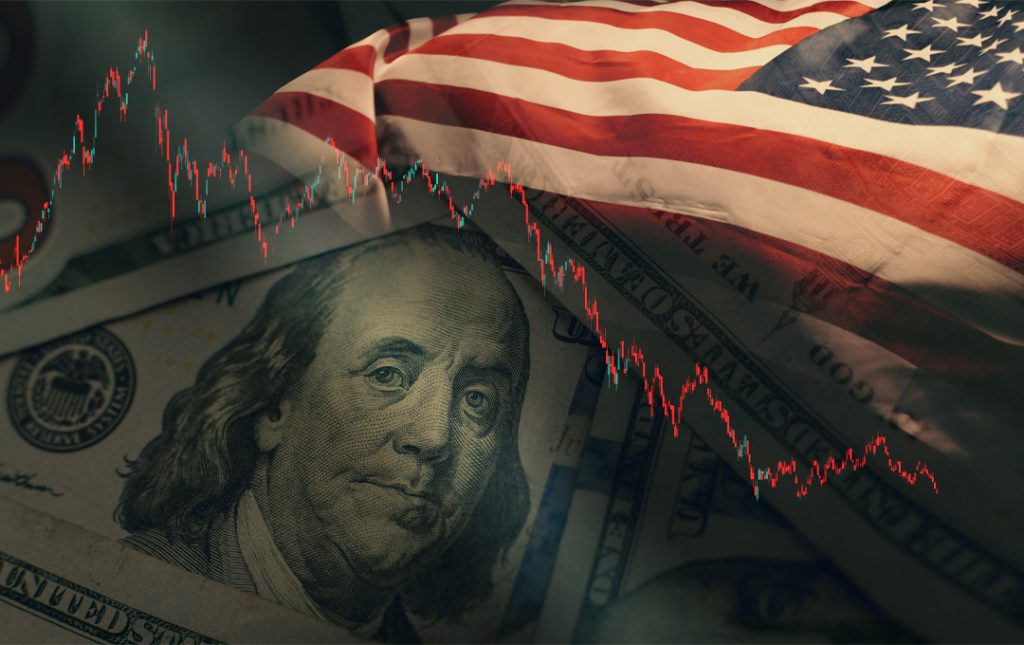The U.S. dollar has been under pressure, with a 5% decline from its 2024 highs as investors bet on the Federal Reserve cutting interest rates in its upcoming September meeting. The anticipation of rate cuts follows a period of robust U.S. economic performance that had kept the dollar strong. However, with inflation cooling and the economy showing signs of softening, the market now expects a shift in monetary policy, which could further weaken the greenback.
The dollar index (DXY), which measures the dollar against a basket of six major currencies, was 0.2% lower on Thursday, hovering near 101.08. The decline reflects growing expectations of a significant reduction in U.S. interest rates, starting with the Fed’s September 17-18 meeting. Currently, markets are pricing in a 59% chance of a 25 basis point (bps) rate cut, with a 41% probability of a larger 50 bps cut.
Investors Bet on Rate Cuts
The Fed’s long period of maintaining higher rates is coming to an end as inflation cools and growth slows. Fed Chairman Jerome Powell signaled last month that it may be time to start cutting rates, triggering expectations of multiple cuts through the rest of the year. Traders are now pricing in around 100 basis points of cuts by year-end, compared to just 60 bps expected from the European Central Bank (ECB).
Several key factors could still influence the Fed’s decision in September. The U.S. labor market data, set to be released on Friday, is a critical component. A softer labor market could solidify the case for more aggressive cuts, while strong job numbers could reduce the urgency for significant easing.
In August, private job growth hit a 3.5-year low, and weaker-than-expected ADP payroll data earlier this week has reinforced concerns of a cooling labor market. Analysts are forecasting 165,000 new jobs in August, up from July’s modest increase of 114,000.
Dollar Decline Could Be Overdone
Despite the recent sell-off, some strategists believe the dollar’s weakness may be overdone. After a 2.2% drop in August alone, a rebound may be in sight, especially if Friday’s labor data exceeds expectations.
The recent dollar decline seems a bit excessive given the Fed’s measured approach,market could be overreacting to expectations of aggressive cuts. The dollar still benefits from a yield advantage over other major currencies, such as the euro and Japanese yen. The yield gap between U.S. 10-year Treasuries and German bunds remains around its five-year average, suggesting the dollar could retain some support despite looming cuts.
Key Currency Movements
- EUR/USD: The euro rose 0.2% to $1.1106, hitting a one-week high. Traders remain cautious ahead of Friday’s U.S. labor data and its potential impact on the Fed’s rate decision.
- USD/JPY: The dollar slipped 0.3% to 143.35 yen, a one-month low, as expectations for a Bank of Japan rate hike and safe-haven demand have lifted the yen.
- GBP/USD: The British pound gained 0.2% to $1.31715, with traders awaiting the Bank of England’s monetary policy meeting in two weeks. The market is currently pricing in a rate cut in November.
- AUD/USD: The Australian dollar reversed earlier losses and gained 0.1%, supported by a hawkish stance from the Reserve Bank of Australia. Impact of U.S. Labor Data on Fed’s Rate Decision
The U.S. labor data report due tonight is poised to play a critical role in determining the size of the Fed’s next rate cut. Here are the potential scenarios and their implications for the dollar:
Scenario 1: Weak Labor Data (NFP < 165k, Unemployment Rises)
- Impact on the Fed: If the Nonfarm Payroll (NFP) numbers come in lower than the expected 165,000 and unemployment rises, it will likely increase the odds of a more aggressive 50 basis point rate cut. Weak job growth and a softening labor market would reinforce concerns about economic slowdown and make a compelling case for a larger cut to support growth.
- USD Reaction: The dollar could see an accelerated decline as markets price in a 50 bps cut. Safe-haven currencies like the yen and Swiss franc would likely gain, while riskier assets such as equities and cryptocurrencies could also rally on expectations of easier monetary policy. Scenario 2: Moderate Labor Data (NFP Near Expectations, Unemployment Stable)
- Impact on the Fed: If the labor data aligns with expectations (NFP around 165k and stable unemployment), the Fed will likely proceed with a 25 bps rate cut. This would confirm the cooling of the labor market without signaling an imminent downturn, leading to a cautious approach from the Fed.
- USD Reaction: The dollar may stabilize or see modest losses as markets continue to factor in the Fed’s gradual easing. EUR/USD and GBP/USD could rise slightly, while USD/JPY may experience limited downside as investors wait for the Fed’s next steps. Scenario 3: Strong Labor Data (NFP > 165k, Unemployment Drops)
- Impact on the Fed: A stronger-than-expected labor report would challenge the case for aggressive rate cuts. In this scenario, the Fed may lean towards a smaller 25 bps cut or even consider delaying further cuts until more signs of economic weakness emerge.
- USD Reaction: The dollar would likely rebound as markets scale back expectations for deeper cuts. A stronger U.S. labor market would reassure investors of the economy’s resilience, boosting the dollar against major peers. In this case, EUR/USD and GBP/USD could retreat, while USD/JPY could rally. Conclusion
The U.S. dollar’s decline has been driven by mounting expectations of Federal Reserve rate cuts. However, the size and timing of these cuts will largely depend on upcoming labor market data. A weak labor report could push the Fed towards a more aggressive 50 bps cut, accelerating the dollar’s decline. Conversely, strong data could provide support for the greenback, limiting its losses. As markets brace for Friday’s report, the dollar’s trajectory remains uncertain, but its role in global finance continues to be central for investors worldwide.
Stay tuned for updates as we monitor how the U.S. labor market data shapes the Federal Reserve’s next move and the broader market reaction.




